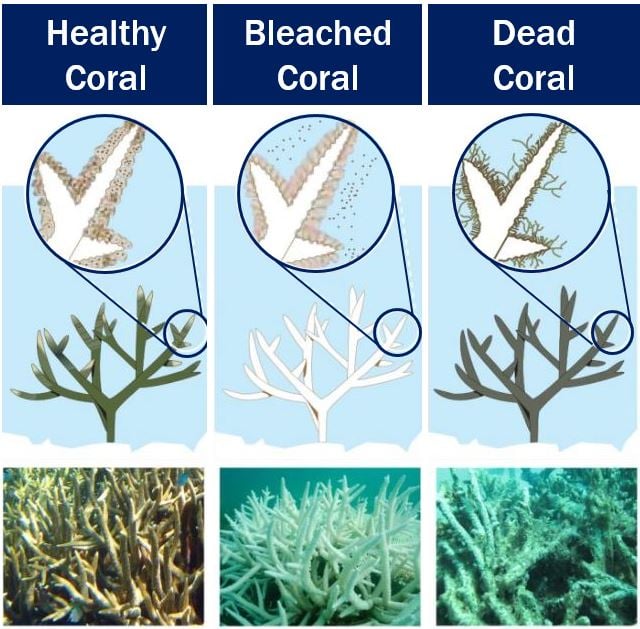Coral bleaching at the Great Barrier Reef may be considerably worse than believed, say scientists from the Great Barrier Reef Marine Park Authority, after carrying out an extensive study. In a press release issued earlier this week, the Great Barrier Reef Marine Park Authority informed that over the past two years, global coral bleaching has led to widespread habitat loss and coral decline on the Great Barrier Reef.
For the last two years, the Great Barrier Reef has been exposed to above-average temperatures of the sea surface, due to a combination of:
– A strong El Niño
– Climate change
These conditions led to mass coral bleaching at the end of the summer of 2016 – approximately 29% of the shallow-water coral of the Great Barrier Reef was lost, scientists informed.
 As the Centre of Excellence’s maps above show, the 2017 coral bleaching footprint differs from 2016 in that it extends further south in the Marine Park. (Image: adapted from gbrmpa.gov.au)
As the Centre of Excellence’s maps above show, the 2017 coral bleaching footprint differs from 2016 in that it extends further south in the Marine Park. (Image: adapted from gbrmpa.gov.au)
During the winter of 2016, sea surface temperatures were still above average, and by the beginning of the following summer, the accumulated heat stress on the Great Barrier Reef resulted in a second devastating wave of mass coral bleaching.
Marine Park Authority staff participated in aerial surveys conducted by the ARC Centre of Excellence for Coral Reef Studies. Their findings confirmed the extent of the 2017 bleaching event’s severity.
Coral bleaching and extreme weather events
As seen in 2016, coral bleaching and mortality vary considerably across the 344,400 square kilometer Marine Park – which covers an area larger than Italy.
The Marine Park Authority wrote:
“In-water surveys and other reports from the community and our science and tourism partners have also been used to determine the health of the Reef following these events.”
“In addition to severe bleaching affecting over half the Reef since 2016, large portions of the Reef have also been subjected to other simultaneous impacts during the 2016-17 summer.”
 Corals are living beings, just like you and me. When they die, they cannot come back to life, just like we can’t. During the coral bleaching stage, it is still possible to save it. (Image: adapted from gbrmpa.gov.au)
Corals are living beings, just like you and me. When they die, they cannot come back to life, just like we can’t. During the coral bleaching stage, it is still possible to save it. (Image: adapted from gbrmpa.gov.au)
On 28th March, 2017, tropical cyclone Debbie crossed the coast at Arlie Beach. Experts estimate that about 28% of the total reef area in the Marine Park was located within the path of the cyclone.
Surveys carried out by the Queensland Parks and Wildlife Service and the Great Barrier Reef Marine Park discovered that some sites have suffered up to 97% coral loss.
Undamaged corals vital for future survival
Studies carried out after extreme weather events revealed that within very damaged reefs, there were many areas that were relatively unharmed. These undamaged areas are critical for providing the next generation of corals, helping the recovery of the reef.
The cumulative effect of the extreme weather events have severely diminished the resilience of most of the reefs north of Mackay, the scientists said.
The Marine Park Authority wrote:
“Although some disturbances are considered natural processes that have shaped coral reef communities over time, impacts such as climate change are leading to more widespread and frequent disturbances.”
Video – What is coral bleaching?
As this Time video explains, global warming, overfishing and pollution are just some of the many toxic things that have caused coral bleaching.
